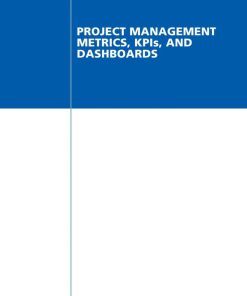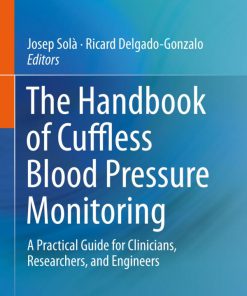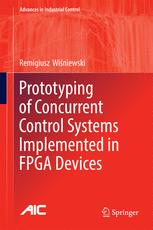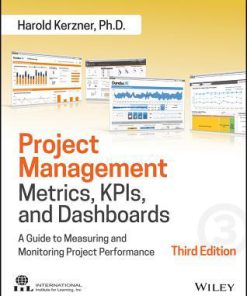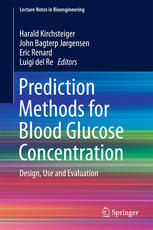Glucose Monitoring Devices Measuring Blood Glucose to Manage and Control Diabetes 1st Edition by Chiara Fabris, Boris Kovatchev ISBN 0128168846 9780128168844
$50.00 Original price was: $50.00.$25.00Current price is: $25.00.
Glucose Monitoring Devices: Measuring Blood Glucose to Manage and Control Diabetes 1st Edition by Chiara Fabris, Boris Kovatchev – Ebook PDF Instant Download/Delivery: 0128168846, 978-0128168844
Full download Glucose Monitoring Devices: Measuring Blood Glucose to Manage and Control Diabetes 1st Edition after payment
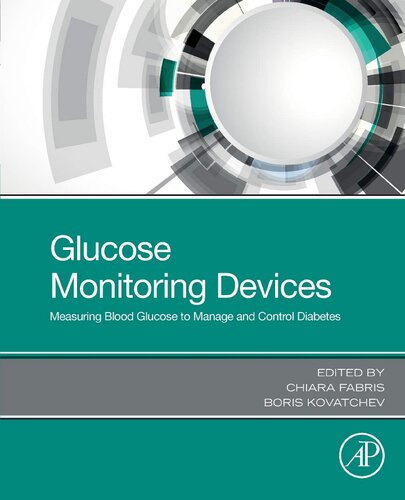
Product details:
ISBN 10: 0128168846
ISBN 13: 978-0128168844
Author: Chiara Fabris, Boris Kovatchev
Glucose Monitoring Devices: Measuring Blood Glucose to Manage and Control Diabetes presents the state-of-the-art regarding glucose monitoring devices and the clinical use of monitoring data for the improvement of diabetes management and control. Chapters cover the two most common approaches to glucose monitoring–self-monitoring blood glucose and continuous glucose monitoring–discussing their components, accuracy, the impact of use on quality of glycemic control as documented by landmark clinical trials, and mathematical approaches. Other sections cover how data obtained from these monitoring devices is deployed within diabetes management systems and new approaches to glucose monitoring.
This book provides a comprehensive treatment on glucose monitoring devices not otherwise found in a single manuscript. Its comprehensive variety of topics makes it an excellent reference book for doctoral and postdoctoral students working in the field of diabetes technology, both in academia and industry.
- Presents a comprehensive approach that spans self-monitoring blood glucose devices, the use of continuous monitoring in the artificial pancreas, and intraperitoneal glucose sensing
- Provides a high-level descriptions of devices, as well as detailed mathematical descriptions of methods and techniques
- Written by experts in the field with vast experience in the field of diabetes and diabetes technology
Glucose Monitoring Devices: Measuring Blood Glucose to Manage and Control Diabetes 1st Table of contents:
1. Self-Monitoring of Blood Glucose (SMBG) Devices
- Introduction to SMBG
- Historical perspective and principles of blood glucose control
- The evidence base for SMBG in type 1 diabetes
- The evidence base for SMBG in type 2 diabetes
- Guidelines for SMBG
- The shortcomings of SMBG and future perspectives
- References
2. Analytical Performance of SMBG Systems
- Introduction
- The process for premarket approval of SMBG devices
- Analytical performance according to ISO 15197
- Precision
- Interference evaluation
- Accuracy
- Analytical performance according to FDA
- Postmarket analytical performance
- Advances in analytical performance of SMBG devices
- Conclusion
- List of authors
- References
3. Clinical Evaluation of SMBG Systems
- References
4. Consequences of SMBG Systems Inaccuracy
- Introduction
- Quantifying the effect of inaccurate BGM systems
- A complex system
- Patient behavior as the main driver
- Effects spread over time and space
- Clinical Outcomes
- Short-term
- Long-term
- Quality of Life and Financial Outcomes
- Long-term
- Accuracy and Its Consequences
- Modeling and simulation
- Metabolic models and simulators (metabolic variability)
- Behavioral modeling and simulation
- Integrated metabolic/behavioral simulation
- In silico accuracy studies
- Modeling and simulation
- Clinical and Financial Outcomes
- From clinical performance to financial outcomes
- Extended Illustration
- The in silico study: meter models, behavioral models, and clinical outcomes
- Conclusions and Future Work
- References
5. Modeling the SMBG Measurement Error
- SMBG Measurement Error
- Why modeling the SMBG measurement error?
- Literature Models of SMBG Measurement Error
- State-of-the-Art Modeling by Vettoretti et al.
- Training and test sets
- Constant-SD zones identification
- Maximum-likelihood fitting
- Case Studies
- One Touch Ultra 2
- Bayer Contour Next
- Applications of SMBG Measurement Error Models
- Conclusion
- References
6. Continuous Glucose Monitoring (CGM) Devices
- CGM Sensor Technology
- Glucose transduction technologies: Enzymatic, electrochemical, and nonenzymatic optical sensors
- Sensor interface and system connectivity
- Skin interface for the wearable transmitter
- Connected systems: artificial pancreas, connected pens
- Commercial Systems Overview
- Abbott Freestyle Libre
- Dexcom G6 CGM
- Medtronic Guardian Connect CGM
- Eversense CGM System
- Summary
- References
7. Clinical Impact of CGM Use
- Introduction
- History and general rationale for glucose monitoring
- Parameters of glucose control and risk association (HbA1c, hypoglycemia, time in range)
- Benefits of CGM
- Operational advantage: direction, patterns, trends, alerts
- Clinical applications and efficacy
- Randomized controlled trials and observational studies
- CGM Limitations
- User dependent, healthcare provider dependent, device dependent
- Further Utility of CGM
- Combining technology, inpatient CGM
- Summary
- References
8. Accuracy of CGM Systems
- Introduction
- Clinical Accuracy
- Numerical (Statistical) Accuracy
- Conclusions
- References
9. Calibration of CGM Systems
- Introduction
- Critical aspects affecting calibration
- Calibration algorithms and challenges
- Bayesian Calibration Algorithm
- Description and implementation of the algorithm
- Calibration scenarios and performance assessment
- Results and Conclusions
- References
10. CGM Filtering and Denoising Techniques
- Introduction
- The denoising problem and possible approaches
- CGM Denoising by Kalman Filter
- Overview and formulation as an online self-tunable approach
- In Silico Assessment
- Accuracy in SNR determination
- Comparison with Moving Average (MA)
- Conclusions
- References
11. Retrofitting CGM Traces
- Introduction
- Retrofitting algorithm and problem formulation
- Retrospective Bayesian CGM recalibration
- Constrained regularized deconvolution
- Accuracy Outcomes and Statistical Analysis
- Retrofitting real-life adjunctive data
- Results and Conclusions
- Appendix: Data Preprocessing
- References
12. Modeling the CGM Measurement Error
- Introduction
- Methods for error modeling
- Results
- Rate of change, error distribution, delay estimation
- Modeling Subcutaneous Sensors
- Conclusions
- References
13. Clinical Use of Monitoring Data
- Low Glucose Suspend Systems
- Introduction and clinical studies
- Cost-effectiveness and limitations
- Future direction
- References
14. Predictive Low Glucose Suspend Systems
- Introduction
- Algorithm development
- Clinical Studies and Commercial Devices
- Keys to clinical use
- Summary and Conclusions
- References
15. Automated Closed-Loop Insulin Delivery: System Components, Performance, and Limitations
- Introduction
- Closed-loop glycemic control algorithms (PID, fuzzy logic, model predictive control, etc.)
- Subspace-based system identification and adaptive control
- Results and Future Directions
- Conclusion
- References
16. The Dawn of Automated Insulin Delivery: From Promise to Product
- Introduction
- Building blocks of continuous subcutaneous insulin infusion therapy and CGMs
- JDRF roadmap to artificial pancreas
- First Closed-Loop Studies and Products
- MiniMed 670G system and real-world use
- Challenges and Patient Considerations
- Conclusion
- Short Biography
People also search for Glucose Monitoring Devices: Measuring Blood Glucose to Manage and Control Diabetes 1st:
continuous glucose monitoring devices
flash glucose monitoring devices
best continuous glucose monitoring devices
constant glucose monitoring devices
glucose monitoring device australia
Tags:
Chiara Fabris,Boris Kovatchev,Glucose,Monitoring,Devices,Measuring,Blood Glucose,Manage,Control,Diabetes 1st
You may also like…
Business & Economics
Business & Economics - Management & Leadership
Medicine - Diabetes
Engineering Technique - Energy
Science (General)




